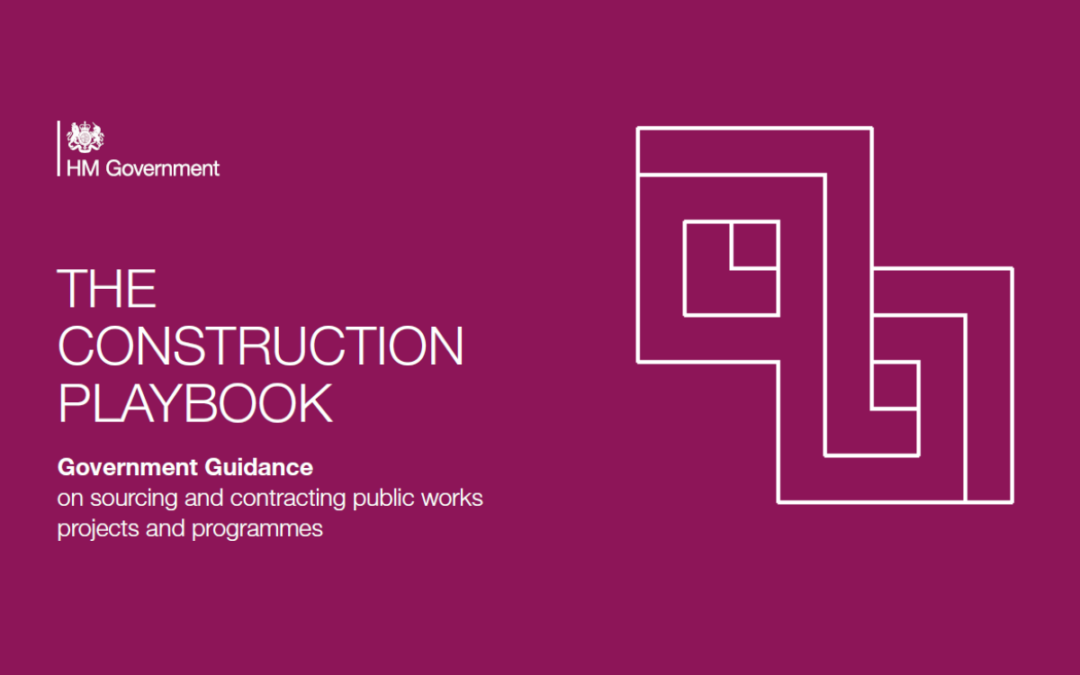
by Iain McIlwee | Jan 11, 2023 | Transformation
The case of LDC (PORTFOLIO ONE) LIMITED vs (1) GEORGE DOWNING CONSTRUCTION LIMITED (GDC) EUROPEAN SHEETING LIMITED (ESL). Starts to give fresh insights into how claims will be heard in the new compliance landscape.
The case related to external wall works carried out by ESL under a sub contract to GMD Developments Ltd (the main contractor). Both contractors were retained on a design and build basis and both issued collateral Deeds of Warranty dated 17 October 2008 in favour of the then employer, GMD. Those Deeds of Warranty were subsequently assigned by GMD to LDC (the employer).
The works related to three blocks, each over 18m high, and each with a different configuration of external wall cladding. In each case, on the inside of the external wall cladding there is a breather membrane and Structural Insulated Panels (“SIPs”). The SIPs were fixed to the structural concrete frame of each block. The case is built on the fact that that following water ingress issues and subsequent investigations into the as-built Property, it was discovered that:
- There are several defects in the external wall construction of the composite cladding elevations which have led to water ingress and deterioration of the SIPs.
- There are fire barrier and fire stopping issues on all elevations; including in relation to the cavity barrier provision between the outer face of the SIPs and the rear face of the cladding panels on the Cor-ten elevations, and between the rear of the SIPs and the concrete slab and between SIPs, on all elevations.
Other material factors were that GMD had already agreed to a settlement of £17,650,000 with LDC, so the judgement being sought was related to LDC’s claim against ESL in the sum of £21,152,198.87 calculated as follows:
- Cost of remedial works: £16,457,825.87; and
- Loss of Income: £4,694,373.00; and
- Downing’s claim for an indemnity and/or contribution against ESL in the sum of£17,650,000 together with Downing’s reasonable costs of defending the claim brought against it by LDC
The Judge found in favour of the Claimant and ESL were required to meet the full costs. The case raises a number of issues.
The first is that it was heard despite the fact ESL are currently in Liquidation. This means that any liability is likely to be met via a Professional Indemnity claim against the collateral warranty. What is not clear is whether cover is commensurate with the claim or whether any subsequent claim could be brought against duty holders associated with ESL to meet any shortfall. The judgement itself is silent on this, but new legal precedence has been created by the Building Liability Order is yet to be tested. On this aspect, this may not be the last we hear from this case.
The second is that it was 15 years ago – remember the Defective Premises Act now allows retrospective claims to go back 30 years (reverting to 15 years on jobs that started after the Building Safety Act was introduced in 2022).
Another important point is that the case rests not on whether the cladding needed to be removed due to the original selection of the SIPS system (it was replaced with SFS), but to address moisture ingress creating structural issues and uncovering fire safety concerns during investigation. Consequently this judgment makes no reference to initial manufacturer claims. Worth dwelling on is that whilst, for the purposes of remediation a new cladding system was selected and the judgment made reference to “post-Grenfell enhanced Regulation”, the premise of the case is that the works themselves fell short of the requirements due to moisture ingress creating structural concerns and residual fire safety concerns related to changes to the specification during the construction process. In her findings the Judge, Ms Buehrlen KV, concurred that it was more cost effective to replace the entire system and SFS was a better alternative in the wake of new guidance. The comments from Technical Witness Mr Fung are interesting in the reference whether the need to replace was proportionate, but the defence seemed to rest on the fact that any remedial encapsulation would not represent a tested solution. The whole case doesn’t really get into the original specification and whether the potential would be a need to replace regardless due to new cladding legislation. It is what we don’t know here that stands out here.
Another and perhaps the most significant aspect of the case is that a design change was pivotal to the judgement and attempts to caveat changes by ESL were not accepted. This judgement centred on design detailing (i.e. missing verticle fire breaks and EPSM Membrane based on the original Architectural Specification) and workmanship (i.e. missing fixings and issues with the horizontal fire breaks) associated with the original cladding specification. Failings and subsequent damage caused by water ingress to the original cladding system meant it was deemed to be structurally unsound and there were concerns about the fire safety raised.
ESL claim that they were instructed to omit the vertical cavity barriers and EPDM included in the Architectural Specification. We are not party to where, how and why the decision was made around removing fire breaks, but ESL did as a result of the claim that they were “instructed to omit” attempt to exclude the provision of fire breaks from their contractual responsibility. The judgement refers to emails and ESL in their original defence maintained that they were not responsible for the design of cavity barriers and they were instructed to omit the EPDM which caused or contributed to the water ingress issues. Much we don’t know, but if there was pressure put on them to value engineer, a buildability issue was uncovered or whether any external advice was provided, it was not recorded and presented in a manner that convinced the judge that ESL were not ultimately responsible. The Judge determined that these elements were intrinsic to the “design of the cladding and rainscreen” to deliver compliance and so regardless of the attempt to exclude and ESL was left with the liability. The balance between these elements and workmanship issues was not discussed.
In conclusion the judge references the details from the Mulalley case in so far as “Building Regulation Compliance” falls under “Reasonable Skill and Care” in design and meetiing “All Statutory Requirements” in the case of the D&B Sub Contract. The judge determined that the attempts to caveat elements of the design doesn’t supersede a contractual obligation to meet “All Statutory Requirements”. It is unclear to me in the judgement how or why these decisions were reached.
Whilst the full implications of this judgement are yet to be determined, it does throw up some concerns for sub-contractors both in terms of the potential for legacy claims, underpins the need to ensure any change to the specification is appropriately signed off and to exercise caution in terms of the assumption that an express caveat releases a party from their core contractual requirements.
This article was prepared by Iain McIlwee and provided in good faith based on initial reading, FIS Lawyers will be looking in more detail at the full implications of this case and potential precedent set.
This judgement has not, at the time of writing been uploaded to the BAILII website, but will appear here imminently, if you are interested to read the full transcript in the interim email iainmcilwee@thefis.org

by Iain McIlwee | Dec 23, 2022 | Main News Feed, Transformation
FIS CEO Iain McIlwee has called out payment practices in the construction sector in a hard hitting article in Construction News this week.
In the article Iain raises the concern that payment conditions are worsening (reported by 21% of FIS Members), with particular issues occurring at the year end. He points out that, whilst average invoice payment times of main contractors with a Duty to Report are reportedly down to 31 days, this masks what is actually happening the ground and the myriad of issues associated with payment applications, pay less notices, certification and underpaying which are picked up in reporting.
A contributing FIS Member who wished to remain anonymous added:
“I am sick to death of begging for money. It isn’t just Christmas. It goes on all year, but definitely gets worse as we move to reporting periods. I attend meetings all the time where I am told businesses pride themselves in paying on time, but it is the spurious underpayments and unsubstantiated pay less notices that they don’t talk about. It feels like death by a thousand cuts.”.
The full article, which you can read here provides first hand accounts of the way in which contractors are being treated and reflects on the impact on relationships and mental health in the sector as well as wasted time and limiting ability to invest and transform. Further experiences have been shared in online discussions linked back to the article.
In reaction, To address the growing number of issues FIS have drafted in experienced adjudicator Len Bunton as a consultant adviser. He has also contributed to the article, reflecting on his recent experiences of working with FIS:
“I am very concerned about the level of issues we are encountering relating to payment. The industry needs to improve its management of the commercial side of contracts, and this should help greatly to reduce some of the current problems. Project bank accounts will help, as will utilising the Conflict Avoidance Process (CAP). I think the public sector needs to lead by example and take far greater interest in ensuring that payment is getting to the supply chain at the right time and in the right amounts. A shaking of the head and saying, ‘this is nothing to do with us’, does not help the industry.”
FIS, as part of our transformation agenda has committed to stepping up the work they are doing on fair payment in 2023 now that Business Secretary Grant Shapps has announced a formal review into payment practices of larger companies and the impact on the supply chain.
You can read more about how is FIS Campaigning for the sector here

by Clair Mooney | Sep 20, 2022 | Technical, Transformation
As part of the work of the Competence Steering Group, Working Group 12 – Construction Products Competence led by CPA presents an innovative white paper, which proposes the built environment industry unite behind a single approach to construction product competence. You can download the white paper here.

by Clair Mooney | Sep 6, 2022 | Sustainability, Transformation
The Cabinet Office has now published the first revision of the Construction Playbook. The Playbook captures commercial best practices and specific sector reforms outlining the government’s expectations of how contracting authorities and suppliers, including the supply chain, should engage with each other.
These are set out in 14 key policies for how the government should assess, procure and deliver public works projects and programmes which all central government departments and their arms length bodies are expected to follow on a ‘comply or explain’ basis.
This is the culmination of 6 months work, which has involved people from across Whitehall and the construction sector, and to which BEIS has made a significant contribution, particularly in relation to the enhanced content in the Playbook and associated guidance on net zero carbon and environmental performance as a key component of a strategic approach to ensuring the sustainability of infrastructure and construction projects. The key points about the substance of these changes are:
- a clearer statement that whole life carbon assessments should be undertaken for all HMG construction projects and programmes, and that these should be consistent with strategic organisational objectives for decarbonising estates and improving carbon performance;
- further guidance on what action contracting authorities should be undertaking at each stage of the process for implementing these projects, from market engagement through to handover and operation, to deliver improved carbon outcomes, with an emphasis on benchmarking, monitoring and reporting these;
- pointing contracting authorities to a much wider range of external resources (toolkits, advice and guidance, promoting the circular economy and contractual clauses – the CIH Value Toolkit is regularly referenced, and we also cite Construct Zero in the Guidance Note) to support their efforts and enable them to embed a more comprehensive approach;
- incorporation of the need to address the provisions of the Environment Act 2021 (e.g. biodiversity net gain), and also emphasising the importance of wider considerations such as air and water quality; and
- additional and comprehensive guidance on Net Zero and Sustainability, including a set of case studies of best practice. We highly recommend the Foleshill Health Centre one as an example of what can be achieved – but we have also managed to include case studies from HS2, the Environment Agency, and also the product platform developed through the TCC with CIH involvement.
Comment of the revised launch of the Construction Playbook FIS CEO, Iain McIlwee stated:
“The Construction Playbook sets its stall out in the first line – the focus is getting projects and programmes right from the start. Nothing really is more important than this, as per our own research on procurment – the best form of dispute resolution is effective procurement in the first place. It is imperitive as the biggest client of construction in the UK that Government is an exemplar client and that the principles outlined in here extend to the wider public sector procurement and into institutional investors.”
The revised version of the Construction Playbook, together with associated documents is available here.
Details of FIS Research into Procurement is available here.

by Clair Mooney | Jul 9, 2022 | Main News Feed, Skills, Transformation
Public consultation launched by the Institute for Apprenticeships and Technical Education (IfATE) on planned new employer-focused approvals system for level 3 technical qualifications.
IfATE want to hear from employers on their proposals to approve the next generation of technical qualifications. The consultation runs from 30 June until midnight on 10 August.
Why employer views matter
A truly integrated skills system brings employers (or their representatives) into the heart of product design, ensuring that employers’ skill needs, across occupations, can be fully understood and met. IfATE share the Department for Education’s (DfE’s) ambition that, in future, the qualifications landscape should be streamlined, offering clear career progression opportunities and giving confidence that qualifications are high quality.
A fundamental part of this will be IfATE’s employer-led occupational standards, alignment to which ensures that students are gaining the knowledge, skills and behaviours employers tell us are needed to be competent in an occupation. The occupational standards are presented in the IfATE occupational maps; these underpin their work, setting out the occupations that can be accessed through technical education. This is an opportunity to share your views and support IfATE to achieve their ambitious plans by helping them shape the approvals process for qualifications submitted as part of the revitalised technical education landscape.
You can access the consultation via this link: https://www.instituteforapprenticeships.org/reviews-and-consultations/consultations/post-16-consultation/. For any questions in relation to this consultation, please contact Ifate.POST16@education.gov.uk

by Clair Mooney | Jul 1, 2022 | Building Safety Act, Skills, Transformation
Build UK is working on behalf of its members to do what they can to address the inflationary pressures currently facing the industry. In addition, Build UK has been taking forward its work on long‐standing issues as part of
Improving Business Performance, Increasing Productivity, and Recruiting, Training and Retaining Talent across the whole supply chain.
The statutory review of the Duty to Report regulations published in April highlighted the ‘positive impact’ that Build UK’s benchmarking of payment performance has had across the sector, with Build UK contractor members now taking an average of just 32 days to pay invoices. Ahead of the Building Safety Act coming into force this week,the Working Group 2 report was delivered, benchmarking the competence requirements for six occupations identified as priorities for ensuring fire safety in buildings. Along with the CSCS Smart Check app launched in April, this represents a major step towards ensuring that individuals deemed competent have the appropriate knowledge, skills and training to undertake their role.






